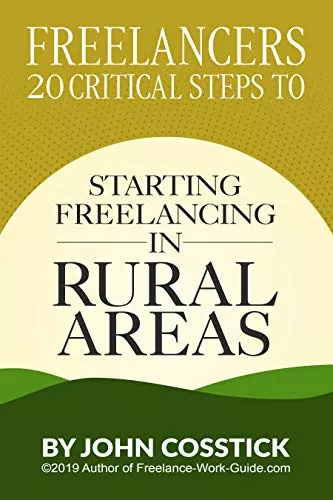In our in-depth comparison, discover how AI voice translators are revolutionizing communication for travelers, professionals, and language learners. This article delves into the features, accuracy, and usability of leading products, addressing common challenges while highlighting their unique advantages. By empowering yourself with this knowledge, you can confidently choose the perfect translator to meet your needs and enhance your global interactions.

Introduction to AI Voice Translators
What is an AI Voice Translator?
AI voice translators are advanced tools that facilitate real-time communication across different languages. They utilize sophisticated algorithms and machine learning techniques to convert spoken language into another language, enabling seamless conversations between speakers of other tongues. The technology behind AI voice translation often involves natural language processing (NLP) and deep learning, which allows the software to understand context, tone, and nuances in speech.
In today’s globalized world, the convenience of AI voice translators cannot be overstated. They break language barriers, making it easier and less stressful for travelers, professionals, and language learners to communicate effectively without needing a human translator.
The Future of AI Voice Translators the Growing Need for AI Voice Translators
As globalization expands, the demand for practical communication tools has surged. The increase in international travel has made it essential for travelers to communicate with locals, navigate unfamiliar environments, and engage in cultural exchanges.
AI Voice Translators and Professional Communication expands globally with the rise of remote work and international collaboration it has created a need for professionals to communicate across borders. AI voice translators are invaluable in these scenarios, allowing teams to collaborate without language hindrances.
AI Voice Translators and Language Learning Language learning trends are also evolving, with technology playing a crucial role. AI voice translators provide learners with immediate feedback and real-life practice opportunities, enhancing their language acquisition process.
Key Features of Leading AI Voice Translators
Clarifying the Types of AI Translators
It is essential to distinguish between two main categories of AI translation tools: app-based translators and standalone AI voice translator devices. App-based translators are typically mobile applications that use AI to translate real-time speech and are installed on smartphones or tablets.
These apps rely heavily on the device’s internet connectivity and built-in hardware, such as microphones and speakers. In contrast, AI voice translator devices are portable, dedicated gadgets that offer similar real-time translation capabilities but are optimized for travel and can function offline in many cases.
These devices provide more accurate voice recognition and can support a broader range of languages, including regional dialects, often without relying on internet access. Understanding the specific needs of your travels or business will help you decide which tools are best for your situation.
Accuracy and Language Support
When comparing AI voice translators, one of the most critical factors is their accuracy and language support. Leading products typically offer a wide range of languages, catering to diverse user needs.
Regarding translation accuracy, many top-tier AI voice translators excel at understanding context and delivering precise translations. User reviews often highlight the effectiveness of these tools in real-world scenarios, displaying their ability to manage complex sentences and idiomatic expressions.
Usability and User Experience
Usability is another essential aspect when evaluating AI voice translators. A well-designed interface can enhance the user’s experience, making navigation intuitive and straightforward.
Voice recognition capabilities are also crucial; the best AI voice translators respond quickly and accurately to spoken input, minimizing conversation delays. Additional features, such as offline translation and text-to-speech functionality, further enhance usability, allowing users to communicate effectively without an internet connection.
Challenges and Limitations of AI Voice Translators
Common Issues Faced by Users
Despite their advantages, AI voice translators do have limitations. One common issue is the lack of support for dialects and regional languages, which can hinder communication in specific contexts.
Moreover, these tools often struggle with slang and idiomatic expressions, leading to potential misunderstandings. Connectivity requirements can also pose challenges, as many AI voice translators rely on internet access to function optimally, limiting their usability in offline scenarios.
Addressing User Concerns
Users can adopt several strategies to maximize translation accuracy. Familiarizing themselves with the capabilities and limitations of their chosen AI voice translator can help them set realistic expectations.
When selecting a translator, specific needs, such as language pairs and usage scenarios, must be considered. As technology advances, we can expect improvements in AI voice translation, including better dialect support and enhanced contextual understanding.
FAQ:
Q: What is an AI voice translator, and how does it work?
A: An AI voice translator is a tool that uses artificial intelligence (AI) to convert spoken language from one language to another in real-time. It utilizes advanced algorithms, machine learning, and natural language processing (NLP) to understand and translate speech accurately, capturing context and nuances.
Q: Are AI voice translators dependable for accurate translations?
A: Yes, many AI voice translators excel at delivering accurate translations, especially for common phrases and formal language. However, they may face challenges with slang, idiomatic expressions, and dialects. Their effectiveness can vary depending on the language pair and the conversation context.
Q: How do AI voice translators manage idioms and slang?
A: While some advanced translators can recognize and translate idioms and slang, others may struggle with these complex language aspects. As a result, the translation may not always be perfect in such cases.
Q: How many languages do AI voice translators support?
A: Leading AI voice translators typically support dozens of languages, including English, Spanish, French, Chinese, and Arabic. However, the exact language offerings vary between products, so checking for specific language pairs before choosing is essential.
Q: Do AI voice translators support regional dialects?
A: Some AI voice translators support regional dialects, but many do not cover all local variations. Dialects can present challenges, and not all tools can translate them accurately.
Q: What features should I look for in an easy-to-use AI voice translator?
A: Look for features like an intuitive interface, quick voice recognition, and user-friendly design. Additional functionalities like offline translation, text-to-speech, and language selection options enhance usability.
Q: Can AI voice translators work without an internet connection?
A: Some AI voice translators offer offline translation capabilities, but many require an internet connection for optimal performance. Offline features can be beneficial for travelers in remote areas.
Q: What challenges do users face when using AI voice translators?
A: Common issues include limited support for regional dialects, difficulty translating slang or idioms, and dependence on a stable internet connection. Depending on the quality of the tool, users may also experience inaccuracies in complex sentences.
Q: How can I improve the accuracy of my AI voice translator?
A: Familiarizing yourself with the translator’s capabilities and limitations is crucial. Additionally, using clear and concise language, avoiding slang, and selecting the most appropriate language pair can help ensure better accuracy.
Q: How can AI voice translators help travelers?
A: For travelers, AI voice translators break down language barriers, enabling them to navigate to new places, engage with locals, and enhance cultural experiences with ease.
Q: Are AI voice translators useful for professionals working internationally?
A: Absolutely! Professionals can use AI voice translators for cross-border communication, collaboration with international teams, and to bridge language gaps in virtual meetings, making remote work more efficient.
Q: Can AI voice translators assist language learners?
A: AI voice translators provide language learners with real-time translation and feedback, helping them practice speaking and improve their comprehension through immersive experiences.
Q: What factors should I consider when selecting an AI voice translator?
A: Consider your language needs, the features you require (such as offline functionality or dialect support), the accuracy of the tool, and your budget. Also, evaluate the tool’s long-term usability and updates.
Q: Are there any free AI voice translators available?
A: Yes, free AI voice translators are available, though they may have limited features or language support compared to paid versions. Evaluate your needs to determine whether a free tool or an advanced paid translator is more suitable.
Q: Are there alternatives to AI voice translators for translation needs?
A: Yes, alternatives include traditional human translators, translation apps, and text-based translation tools. However, AI voice translators offer real-time, on-the-go translations, making them particularly convenient for conversations and travel.
Q: Can we expect improvements in AI voice translators?
A: Yes, as AI technology advances, we can expect improvements in accuracy, dialect support, and contextual understanding. Ongoing developments in machine learning and natural language processing will make these tools even more effective for a broader range of languages and scenarios.
The development of AI translators raises the question of whether AI will replace human translators. Winnie Heh gives her view:
Conclusion
Factors to Consider When Selecting a Translator
When choosing an AI voice translator, it is vital to identify personal or professional needs. Budget consideration is also crucial, as there are both paid and free options available. Evaluating long-term usability and the potential for updates can ensure that the chosen tool remains effective over time.
Final Recommendations
In summary, several top AI voice translators cater to different user groups, from travelers to professionals and language learners. Embracing this technology can significantly enhance communication and foster meaningful interactions across cultures.
We encourage you to explore and invest in the best AI voice translator for your needs, whether it is a free option or a more advanced solution. Doing so can unlock new opportunities for global engagement and understanding.
Image Credit by Pro.Elements.Envato















